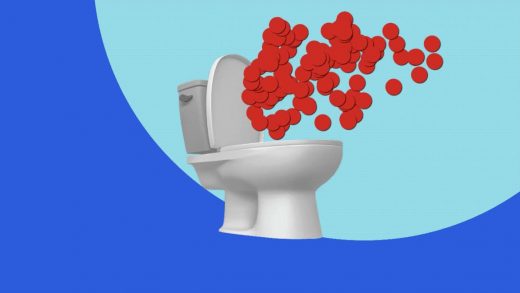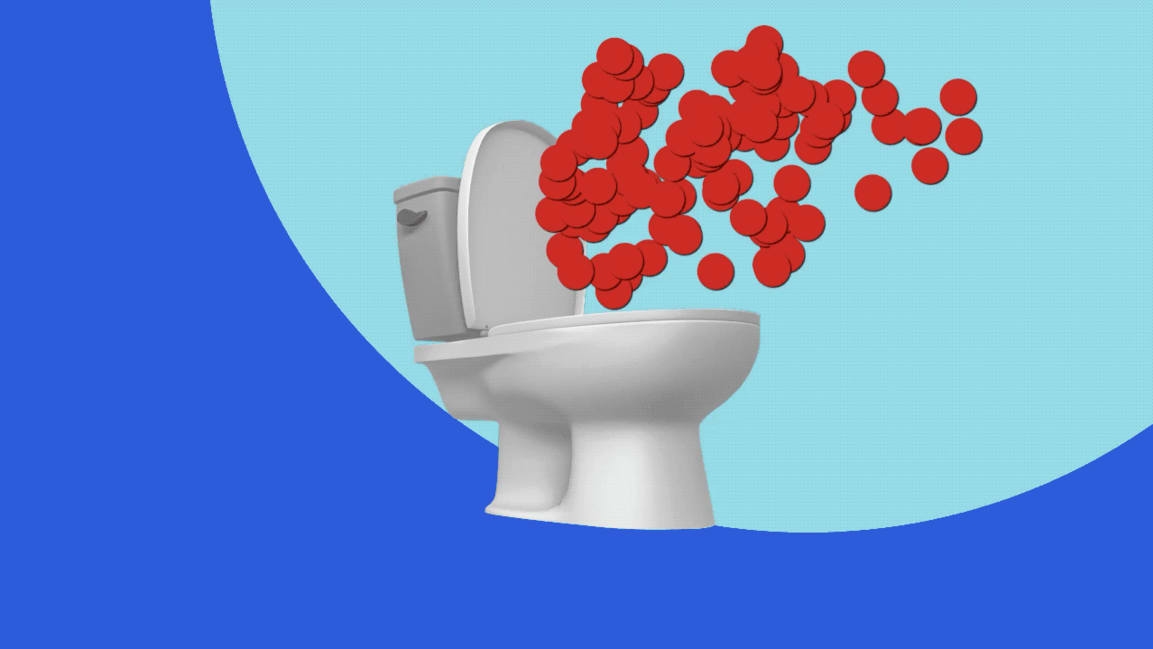Just how big a cloud of poop particles do you create when you flush a toilet?
Despite businesses reopening and states relaxing their stay at home restrictions, the threat of COVID-19 still looms large. The biggest risk comes from close person-to-person contact, since the coronavirus is mainly spread through respiratory droplets when someone coughs, sneezes, or even talks. But being in spaces where the air is filled with viral particles could also contribute to the spread, and one space is particularly troublesome: public bathrooms. New research shows that flushing a toilet can create a cloud of virus-containing particles that float in the air for more than a minute.
Research has found SARS-CoV-2, the virus that causes COVID-19, in people’s gastrointestinal tract as well as stool samples from infected patients, meaning that the virus could possibly spread from fecal-oral transmission. In a new study published in the American Institute of Physics journal Physics of Fluids, Yangzhou University researchers used a computer simulation to show exactly how toilet flushing could disperse the virus.
Ji-Xiang Wang, coauthor of the study and a fluid researcher at Yangzhou University, says the team created computer models to simulate how both water and air flow in a flushing toilet, and the resulting droplet cloud that turbulent flush creates. Researchers created models for toilets with one water input port, meaning water comes in from just one side, and two ports, for which water comes in on both sides of the toilet bowl during a flush.
When water pours into a toilet bowl from one side, it hits the opposite side, creating a vortex of air, water, and particles. That vortex continues above the toilet bowl, carrying droplets that may contain viruses and bacteria up about three feet into the air. “The lifted virus can reach the average human head for sure,” Wang says over email. Toilets with two ports create an even greater velocity of aerosol particles; simulations showed that with two-port toilets, nearly 60% of aerosol particles rise above the seat (for single-port toilets, that figure was around 40%).
These droplets are so small, researchers say, that they can float in the air for longer than a minute, where they can then be inhaled or settle onto surfaces around the toilet. “It can be imagined,” the researchers write, “that the velocity will be even higher when a toilet is used frequently,” such as a public toilet used by a lot of people.
The Centers for Disease Control and Prevention says that there has not yet been any confirmed report of COVID-19 spreading from feces to a person. Researchers still worry that this plume of aerosol particles could cause a cross-infection—”not only for COVID-19,” Wang says, “but also viruses that can spread among humans via fecal-oral transmission once a confirmed case uses that public toilet.” Prior research has already found that toilet flushing may spread bacteria in hospitals, and also generally poses a risk to spread infectious aerosol particles that could transmit norovirus, SARS, and influenza.
Closing the lid when you flush is the easiest way to mitigate this risk. For public toilets, though, that’s not often an option. Experts have already said that the coronavirus pandemic may force us to rethink toilet designs—and reconfigure public bathrooms for the better, and Wang agrees that there should be some changes.
“[We] want to send messages to the average people that the flushing will lift the virus up from the toilet bowl, so they need to close the lid first and then trigger the flushing process. If the flushing is an automatic process without closing the lid, you should wash your hands carefully,” he says. But most importantly, he adds, “Toilet manufacturers should design a new toilet in which the lid is automatically put down before flushing.”
(68)



